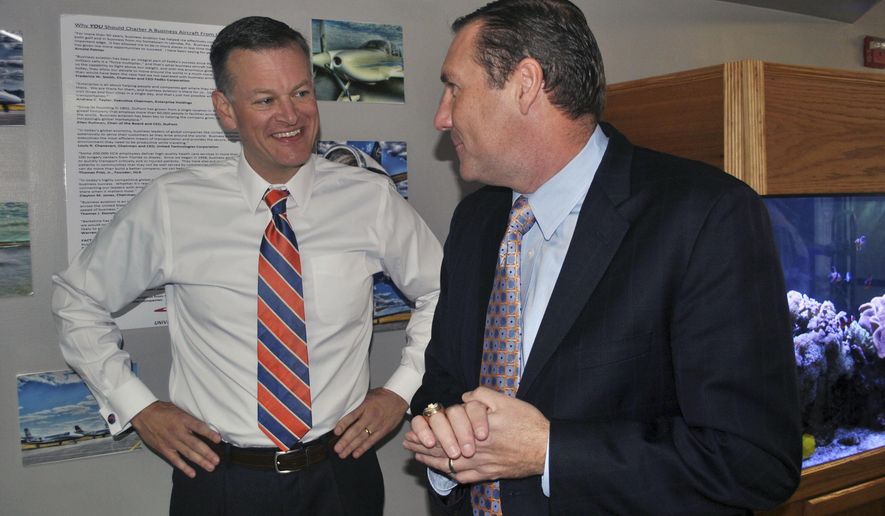Making the home run hire seems to be more difficult than ever when it comes to college football coaches.
Silly season moved quickly this year, spinning this way and that over a frenetic couple of weeks. UCLA and Texas A&M both made a splash by hiring Chip Kelly and Jimbo Fisher, respectively. Tennessee flailed about for two weeks before hiring Jeremy Pruitt, a promising coordinator and Nick Saban disciple.
Florida State hired Willie Taggart, and his 47-50 career record, away from Oregon. The Ducks promoted offensive coordinator Mario Cristobal, whose previous head coaching experience was four losing seasons in six years at Florida International. Mississippi also stayed in-house, taking the interim tag off Matt Luke. Nebraska (Scott Frost) and Arkansas (Chad Morris) hired coaches with a combined five years of head coaching experience.
People in the business of college football say the pool of experienced candidates has dwindled, thinned by rapid turnover and less desire among established coaches to jump from one job to another.
“Hiring has always been difficult,” Penn State athletic director Sandy Barbour said. “I think the proven talent has been kind of picked over, if you will. So that puts a premium on athletic directors and institutions having a broader knowledge. All fan bases want a known, proven commodity. Name, win-the-press-conferences kind of a hire. That’s not possible for everybody to do.”
Media chatter, sports talk radio and message boards tend to fuel unrealistic expectations about coaching searches. The so-called carousel is constantly turning, though this year seemed unusually frantic.
“What was different this year for me was a lot of premier institutions were in the market at the same time,” Notre Dame athletic director Jack Swarbrick said. “I had exactly that thesis: That the pool is not deep enough to sustain this many searches and the domino effect of the searches.”
The average tenure of current Power Five coaches, including the newest hires, is 4½ years. Outliers such as Kansas State’s Bill Snyder (26 years leading the Wildcats) and Iowa’s Kirk Ferentz (19 years with the Hawkeyes) skew those numbers. The median number of years for current coaches leading a Power Five program, including Notre Dame, is three.
Thirty-one schools have a head coach who has been at his current job for two years or less.
Florida athletic director Scott Stricklin said there is “no question” the short tenures these days have an effect amid concern “that we’re not having time to really mold the next generation of coaches the right way.”
“You end up making hires that are more risky,” he said. “Doesn’t mean they’re not going to be great hires.”
Stricklin moved quickly to hire one of the few proven candidates available this year in Dan Mullen, who during nine years at Mississippi State had become maybe the most successful coach in the history of the program.
It would be hard to find a Nebraska fan who is not excited about the school hiring former Cornhuskers quarterback Scott Frost. In two seasons at Central Florida, Frost took over a team that was 0-12 the year before he arrived and went 12-0 this season. After three years as an offensive coordinator at Oregon and two years as a head coach (with an 18-7 record), the 42-year-old Frost was one of the hottest commodities on the market. He profiles similarly to Tom Herman, 42, who parlayed a successful stint as Ohio State’s offensive coordinator and two excellent seasons at Houston into the Texas job.
“The whole thing accelerates. I think that creates a problem,” Swarbrick said. “They’re great Xs and Os guys, but do they understand how to work with the university administration and how to work with donors? Do they understand how to manage young people? I worry about it, especially in football.”
The days of ADs being former coaches, often football coaches, and school presidents not getting involved in athletics are long gone. Working with administrators is more crucial than ever.
That dynamic, plus the explosion of salaries, has experienced and successful coaches settling into jobs when they can.
“I don’t know that the lure of cash is as big a deal as the lure of saying, ’OK, I’ve got stability,’” said Todd Berry, the executive director of the American Football Coaches Association and former head coach at Army and Louisiana-Monroe.
Fans of schools such as Tennessee can get frustrated when the folks in charge can’t lure a successful coach from another school, but those types of hires - like Fisher jumping from Florida State to Texas A&M - are a rare exception. The more typical hire is the one Tennessee made (Pruitt, the Alabama defensive coordinator) or the one Volunteers fans revolted against - Ohio State defensive coordinator and former Rutgers coach Greg Schiano.
Texas A&M, Florida State and Florida hired a sitting Power Five head coach, but it had been two years since that happened. Wisconsin (Paul Chryst from Pittsburgh) and Penn State (James Franklin from Vanderbilt) are the only other schools with a current coach who was hired directly from another Power Five school.
“I think there’s a perception in the public … just go hire so-and-so, throw a bunch of money at him and they’ll take your job,” Stricklin said. “That’s not the case.”
___
Follow Ralph D. Russo at www.Twitter.com/ralphDrussoAP
___
More AP college football: http://collegefootball.ap.org and http://www.twitter.com/AP_Top25




Please read our comment policy before commenting.